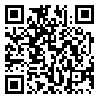BibTeX | RIS | EndNote | Medlars | ProCite | Reference Manager | RefWorks
Send citation to:
URL: http://mjiri.iums.ac.ir/article-1-2359-en.html
Background :Prescribing represents a new aspect of practice for nurses. To make qualitative results more accessible to clinicians, researchers, and policy makers, individuals are urged to synthesize findings from related studies. Therefore this study aimed to aggregate and interpret existing literature review and systematic studies to obtain new insights on nurse prescription.
Methods : This was a qualitative meta synthesis study using Walsh and Downe process. In order to obtain data all Digital National Library of Medicine's databases, search engines and several related sites were used. Full texts with "review and nurs* prescri* " words in the title or abstract in English language and published without any time limitation were considered. After eliminating duplicate and irrelevant studies, 11 texts were selected. Data analysis was conducted using qualitative content analysis. Multiple codes were compared based on the differences and similarities and divided to the categories and themes.
Results :The results from the meta synthesis of the 11 studies revealed 8 themes namely: leading countries in prescribing, views, features, infrastructures, benefits, disadvantages, facilitators and barriers of nursing prescription that are discussed in this article. The results led to a schematic model.
Conclusion : Despite the positive view on nurse prescribing, there are still issues such as legal, administrative, weak research and educational deficiencies in academic preparation of nurses that needs more effort in these areas and requires further research.
| Rights and permissions | |
 |
This work is licensed under a Creative Commons Attribution-NonCommercial 4.0 International License. |





